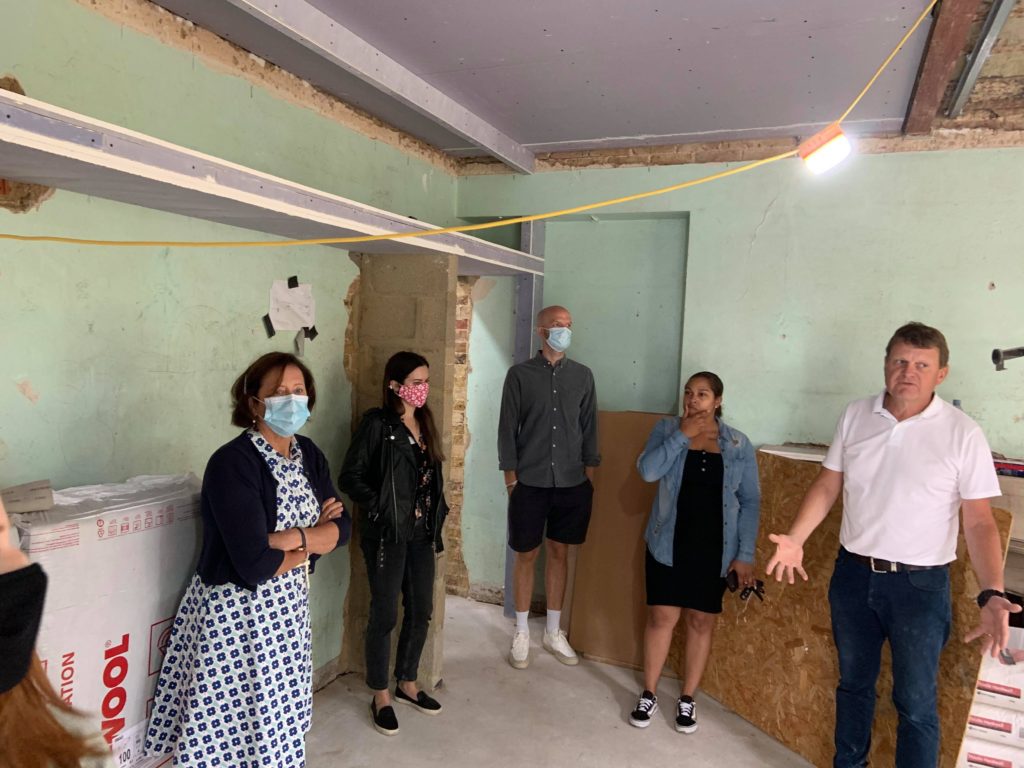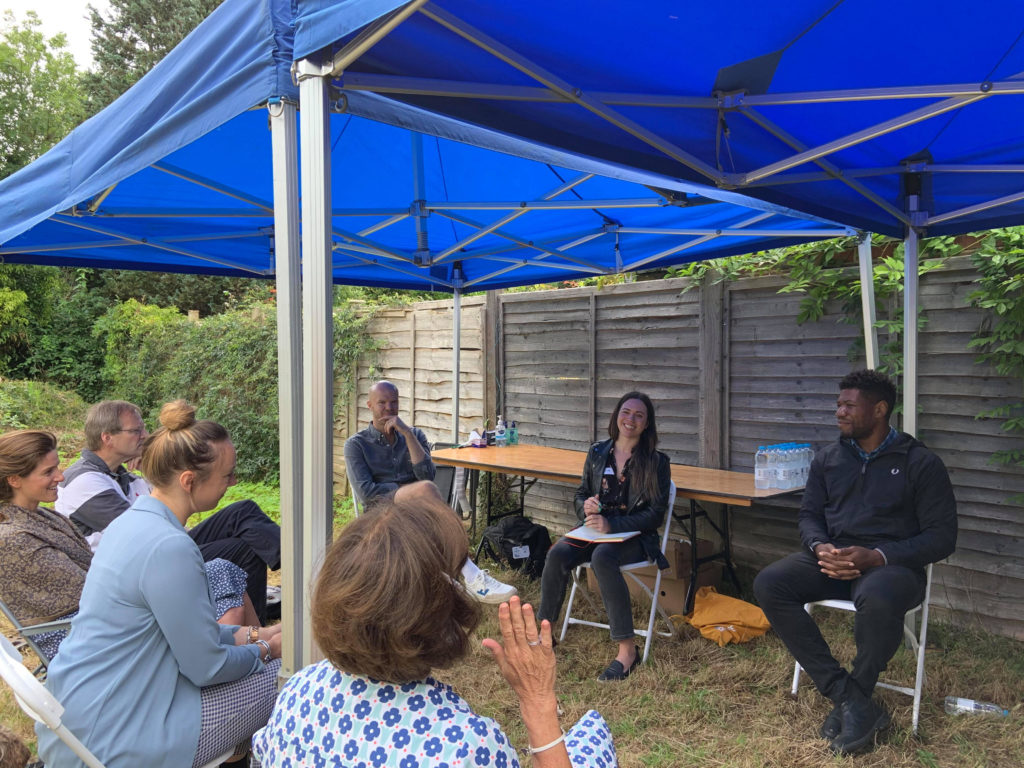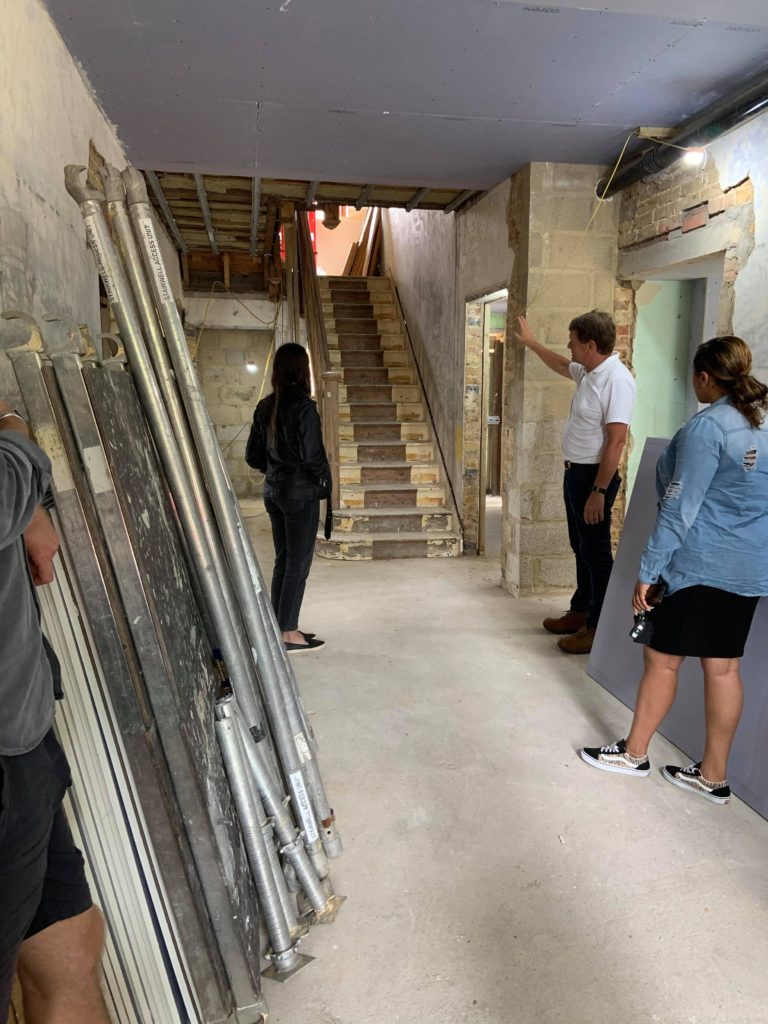On Wednesday 28th July, Big Change and a group of our supporters made our way to Sutton to visit one of our amazing project partners, Lighthouse, whose new model of children’s home is transforming the way we support looked-after young people in the UK.
The day started with an in-depth talk from Emmanuel, the founder of Lighthouse, who explained the background research and long-term vision behind Lighthouse’s work, as they aim to reimagine the current model of UK care homes, to one that focuses on stability and relationship-based support for these often forgotten children.
Emmanuel had the initial inspiration for the idea while serving on the Teach First programme where he noticed that the academic achievement of looked-after children did not reflect their ability.
During his initial research he discovered that there are 80,000 children looked after in the UK, the vast majority of whom come into care as a result of abuse and neglect. Most of these young people live in foster care, but 10% of them cannot be fostered for a range of reasons, often trauma-related. This became Emmanuel’s area of focus.

Upon doing further research he discovered that only 4% of children in residential care (who make up 10% of all looked-after children) will get 5 good GCSEs, 90% had mental health issues and they were far more likely to be involved in the criminal justice system.
Emmanuel realised there must be a better way. He started to volunteer and visit children’s homes. Most of his research was conducted while living in Germany and Denmark, where children in care often do as well as their peers academically. Social pedagogy is the main method of practise in Western Europe. It is built around creating strong relationships with children and ensuring that staff acquire the full gamut of skills necessary to support these children: sociology, educational skills, philosophy, and psychology.

Continental homes have realised the most important thing for children is the people around them, with whom they can build and maintain lasting relationships. As such, it became clear to Emmanuel that the recruitment, training and retention of good staff is key to maintaining a stable environment, but in the UK there is a turnover of between 19-50% per year, with some homes registering up to 80% turnover per year. This focus on good, permanent staff became a main inspiration for the Lighthouse model.
Furthermore, UK homes are often set up in parts of the country where property is cheap, which in turn leads to a lack of supply in more expensive regions of the country like London, which only has one third of the places that its population actually needs. This makes it very hard for looked-after children to maintain contact and relationships with their families, and meaningful guidance and social networks that these can offer. The homes often lack a clear practice framework and consequently are not provided with the necessary educational support.
The archetypal homes children experience feel institutionalised whereas Emmanuel found that many of those in Europe felt like typical family homes. This became crucial to the Lighthouse model ensuring that the children felt comfortable in a loving environment. In essence, Lighthouse is setting out to make their first children’s home exactly that – a home.
After the talk from Emmanuel and a lively, participative group conversation, we were lucky enough to be given a tour of the new home. The lead constructor Mark talked us through each part of the new home, explaining in detail all of the planning and forethought that goes into building a specialist building that feels like a home.

One of the first things Mark explained was how the building would be heated. Using a combination of underfloor and infrared heating panels ensured that the building was heated effectively, sustainably, and with a mechanism that would be durable and cost-efficient. The infrared heating panels are placed within the ceilings – yes that’s right, within the ceilings – allowing the building to be warmed up much more quickly than through a traditional radiator system. The fact that the heating system is a very newly developed mechanism ensures that there will be limited maintenance and this building will be prepared for many years to come.
Throughout the tour, it was clear how much thought had gone into every aspect of the building design. Each room had a hallway entrance so that when a member of staff entered a young person’s bedroom, they could stand in a neutral space, ensuring that the room still feels private for the resident whilst still allowing staff to safely enter the bedrooms.
Each communal room, such as the living rooms, had two doorways so that young people always felt able to move freely in and out of these spaces even if there were other people standing in front of a doorway. In addition to this, near all of the communal spaces, there were seating nooks, based on the insights about how new residents often like to be near others in the home without necessarily being in the same space. Many of the materials used throughout the home are used to create learning opportunities for its residents.
Perhaps the most exciting part of the new home was the transition living spaces at the top of the home. After spending time in children’s homes in Germany and Denmark, Emmanuel noted that it is the norm for homes in these countries to have transitional living spaces. Instead of residents simply leaving the home when they reach 16, they have the option to live more independently, with their own kitchens and communal spaces, whilst still living in a larger home. This offers support for the next stage in their lives and mirrors far more closely, the experience of young people living with parents or guardians who do not always feel ready to immediately move out upon reaching a legal age.
One of the most striking aspects of the visit to the Lighthouse site was the level of thought and consideration that had gone into every aspect of the process, from planning to construction. It showed a deep understanding of what these homes mean to the young people who come to live in them, how they can be made spaces of comfort, support and flourishing.

We want to send a huge thanks to Emmanuel and his team, as well as Mark and the rest of the team on the site, for hosting us and allowing us to really dive deep into Lighthouse’s vital work and long-term mission. We can’t wait to see the home transform into the welcoming, innovative, and homely environment that Emmanuel and the Lighthouse team has so painstakingly designed it to be. The home aims to open its doors later this year, so watch this space for opportunities to visit or support once it does. In the meantime, there are five powerful ways to support Lighthouse in their vital next steps:
- Lighthouse’s Wishlist – You can purchase items for the home on Amazon here.
- Mid-size grants – Lighthouse are seeking funding to help cover programme and core costs e.g. sponsoring activities for children like holidays, tennis or horse riding, specific roles within the Lighthouse team, or projects for staff in the home e.g. training programmes.
- Larger grants and funding – they are seeking a partner to secure their next home with and are keen to have conversations with potential funders.
- Volunteering – if you’re interested in practical opportunities to support with setting up the home so it is ready for day 1, or lending expertise to the core team such as marketing advice, please do reach out.
- Networks – Finally, Lighthouse are always interested in talking to people with an interest in children’s homes, start-up organisations, local authority experience, children’s services experience and would welcome introductions to understand more about these sectors. If that’s you, or you know who that might be, please do make the connection!
